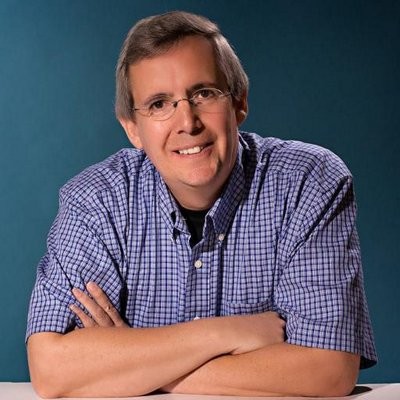IEX founder Brad Katsuyama aims to change how markets function The Globe and Mail
Post on: 27 Май, 2015 No Comment

Five months ago, Brad Katsuyama went from being the founder of an obscure startup to the hero of a runaway bestseller. Now comes the hard part: building a business that will live up to some very high expectations.
The Union flag is seen through the EU flag as they fly outside The European Commission Representation in the United Kingdom in central London January 23, 2013. Britain’s Prime Minister David Cameron promised on Wednesday to give Britons a referendum choice on whether to stay in the European Union or leave if he wins an election in 2015, placing a question mark over Britain’s membership for years. REUTERS/Stefan Wermuth (BRITAIN — Tags: POLITICS) REUTERS
market view
The subsequent media attention was so intense that strangers now recognize Mr. Katsuyama on the street, at church and in restaurants. Earlier this summer, he testified before a Congressional committee. Meanwhile, he and his staff of almost 40 employees are striving to shake up the status quo.
An alternative platform for buying and selling stocks, IEX was built to thwart the advantages that high-speed traders enjoy elsewhere and to offer a more transparent place to trade. It has a limited number of order types, charges a uniform fee for trades and employs a technological speed bump to neutralize certain trading strategies.
IEX has notched some early successes but remains small. Last week, it hit a record for its daily share of U.S. stock trading: just under 1 per cent of the total, with 46 million shares changing hands. In July, it managed to break even for the first time since the platform launched in 2013. New and existing investors are expected to provide more than $50-million in fresh capital in a round of funding closing within weeks.
The funds will help bankroll the company’s next big project: converting itself into a bona fide stock exchange. IEX is currently a “dark pool” – a trading venue that doesn’t post its prices but whose size is restricted by regulation.
“If you really want to solve the problem, you have to solve it on the largest possible scale that you can do it – and that is to become an exchange,” Mr. Katsuyama said.
By seeking to expand, IEX is also becoming a bigger target. “You can expect the existing players to fight for their market share, which they’ve been doing for years in a dog-eat-dog business,” James Angel, a professor of finance at Georgetown University, said. “Can IEX deliver a product that’s better than the other solutions that are out there? At the end of the day, that’s going to determine their success or failure.”
In recent months, IEX has been buoyed by a number of regulatory actions that support its contention that U.S. stock trading is beset by conflicts of interest. Back in April, Mr. Katsuyama memorably clashed in a television debate with William O’Brien, then the president of BATS Global Markets Inc. over whether Mr. O’Brien’s exchange offered an unfair edge to high-frequency traders. Earlier this month, the Wall Street Journal reported that BATS was in advanced settlement talks with the U.S. Securities and Exchange Commission related to such allegations involving one of its units.
Asked if he felt vindicated by the news that BATS was looking to settle with U.S. regulators, Mr. Katsuyama paused meaningfully. “Nothing we’ve seen has surprised us,” he said.

In a related investigation, New York’s attorney-general has alleged that Barclays PLC misled clients of its internal trading platform, or dark pool, by falsely promising they would have protections against predatory high-speed trading strategies.
“We’re seeing a lot of subpoenas and questionnaires” around whether firms are executing trades in the best available manner for their clients, said Christopher Nagy, chief executive of KOR Group, a research and consulting firm. “As that momentum continues to grow, a natural beneficiary is IEX.”
IEX continues to fight back against those who question the validity of its mission. In July, a financial analyst at Raymond James & Associates published a note saying that “IEX isn’t quite the sparkling pillar of righteousness that it is often portrayed in media reports” and that “much-vilified high frequency trading firms are a major source of liquidity” at the firm. Mr. Katsuyama felt compelled to respond in an op-ed piece: Such traders account for less than 20 per cent of IEX’s trading volume – and the way IEX is structured means they can’t use the predatory strategies possible elsewhere.
For IEX, the process of becoming an exchange could take up to a year and will include a period of a public comment on its proposal. At least one element is likely to spur a lively debate: IEX intends to bring an established feature of Canadian stock trading – known as “broker priority” or “broker preferencing” – to the U.S. When a broker’s buy and sell orders match up, they will move to the top of the queue and trade for free at IEX.
“It’s the single best way to reduce the number of markets in the United States,” said Mr. Katsuyama, a former trader at Royal Bank of Canada. Currently U.S. stock trading is fragmented across more than 50 venues, some of them exchanges but the majority of them dark pools. Giving priority to matching broker orders will decrease or eliminate the appeal of such internal trading venues, he asserted.
IEX has already travelled a long way from its start in a small windowless room in lower Manhattan in 2012. Mr. Katsuyama professes patience for the road ahead. “It takes time to convince people to do something differently,” he said.














